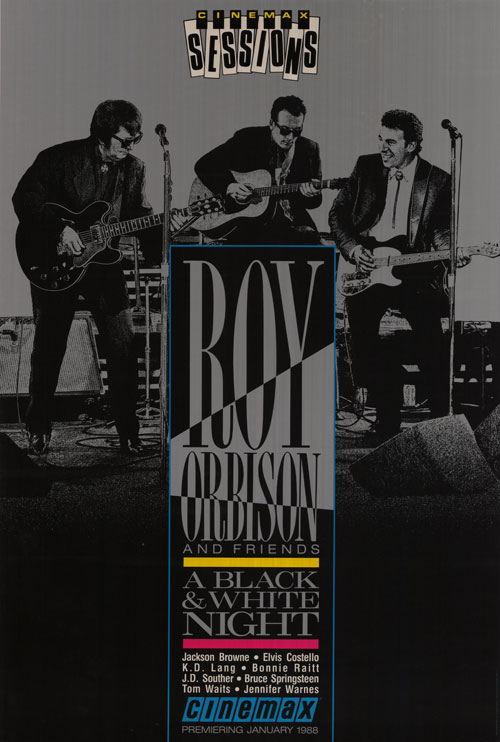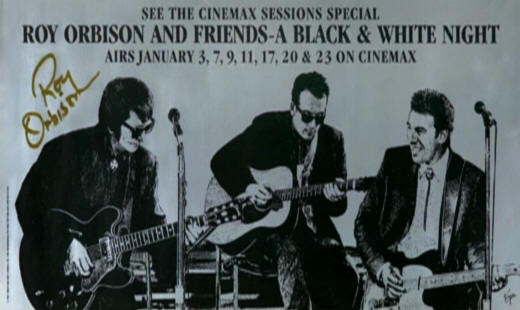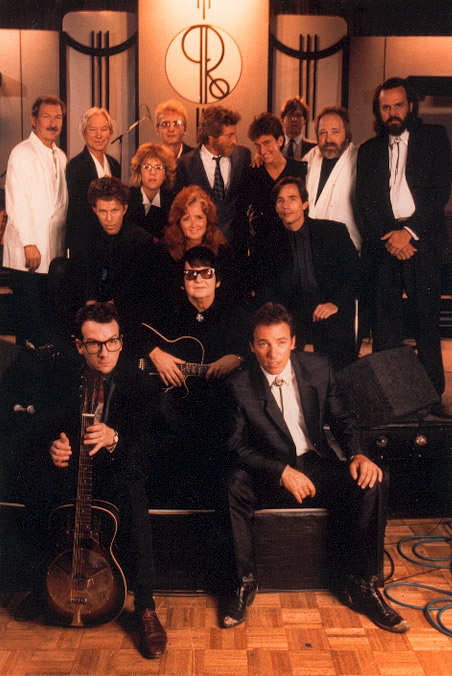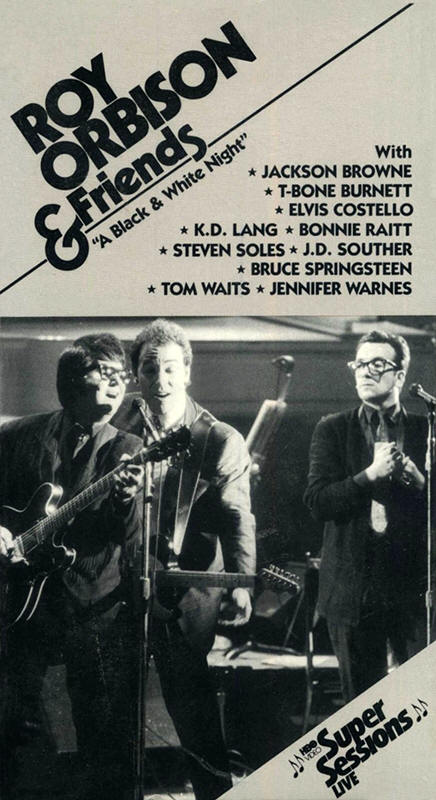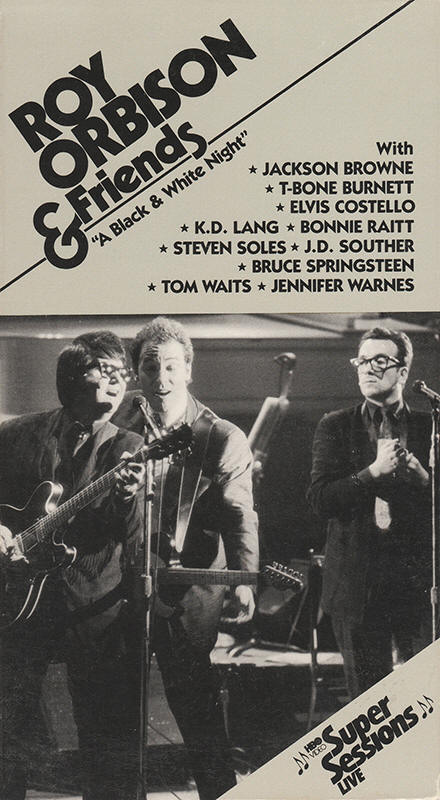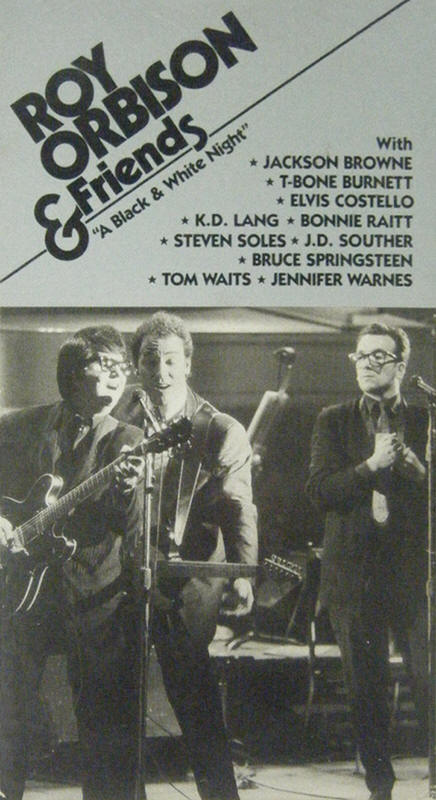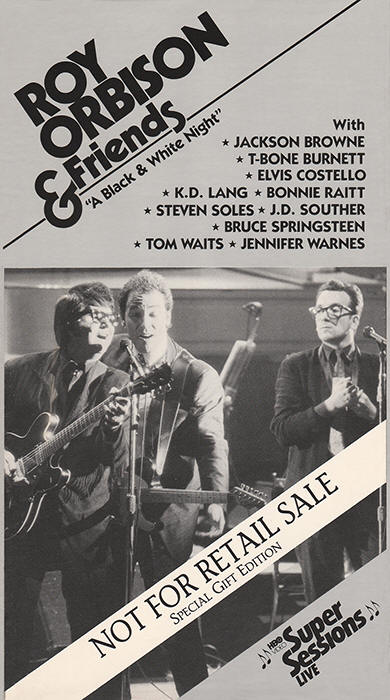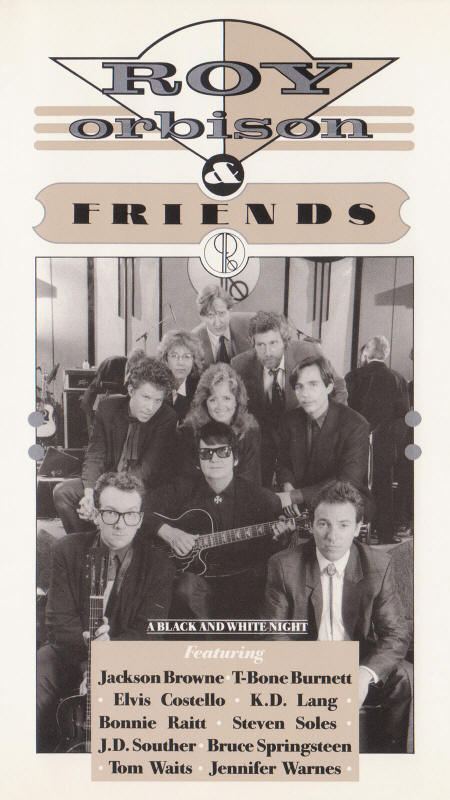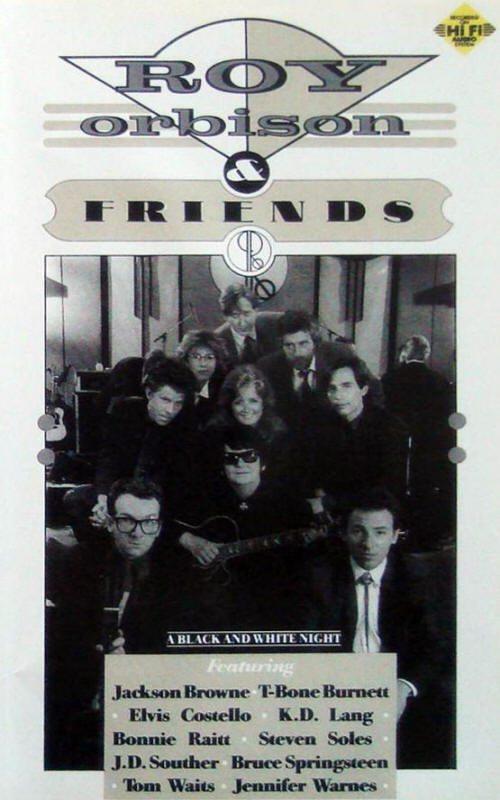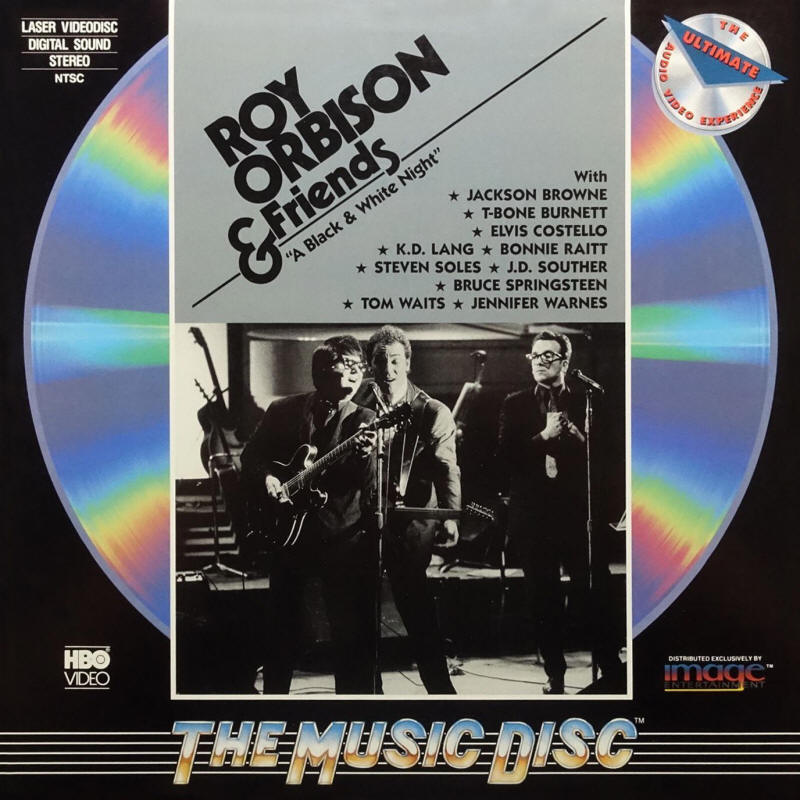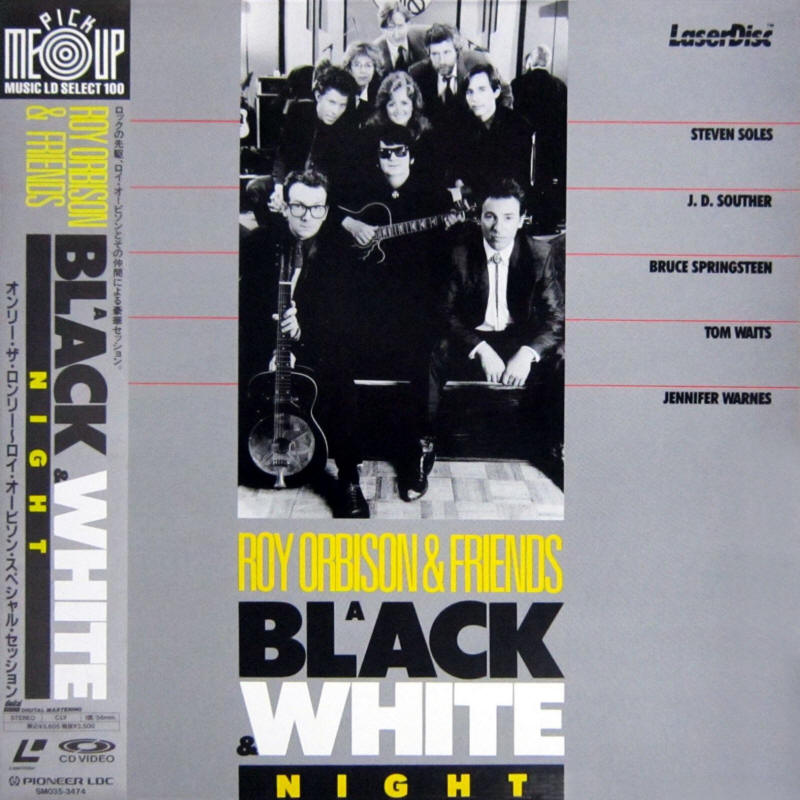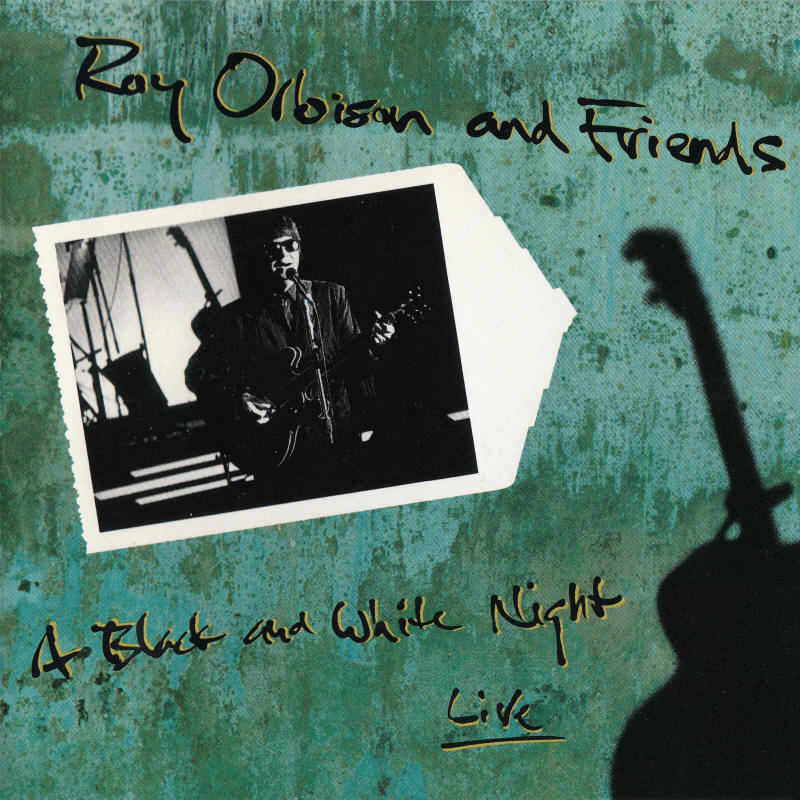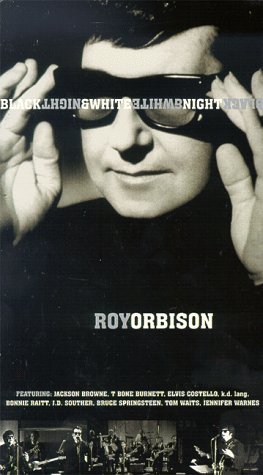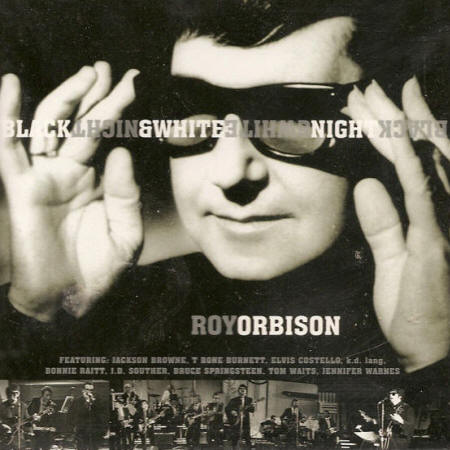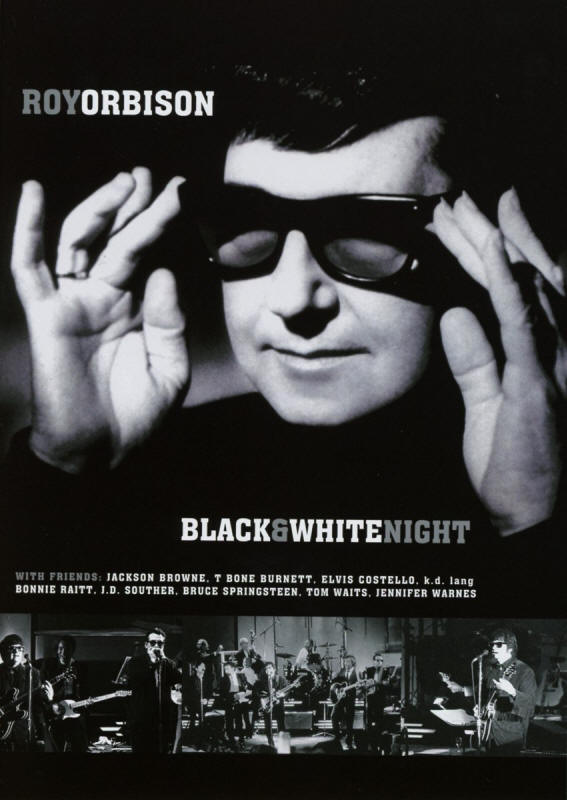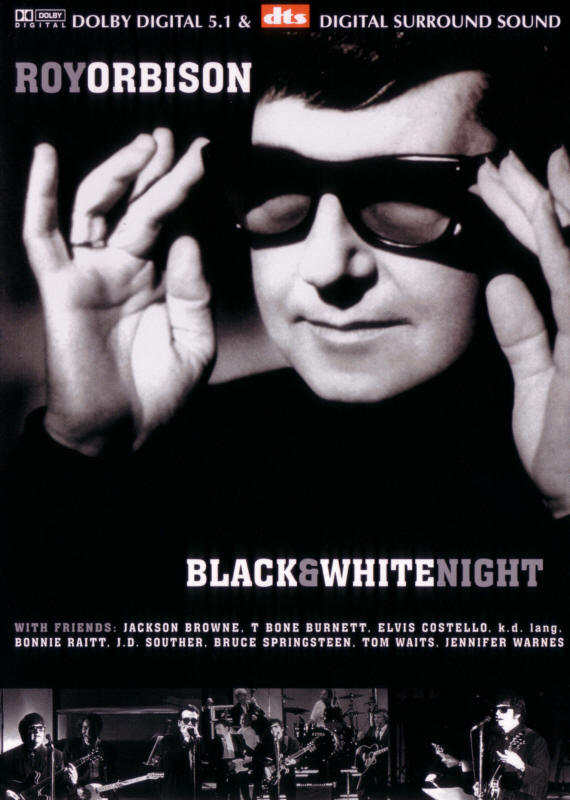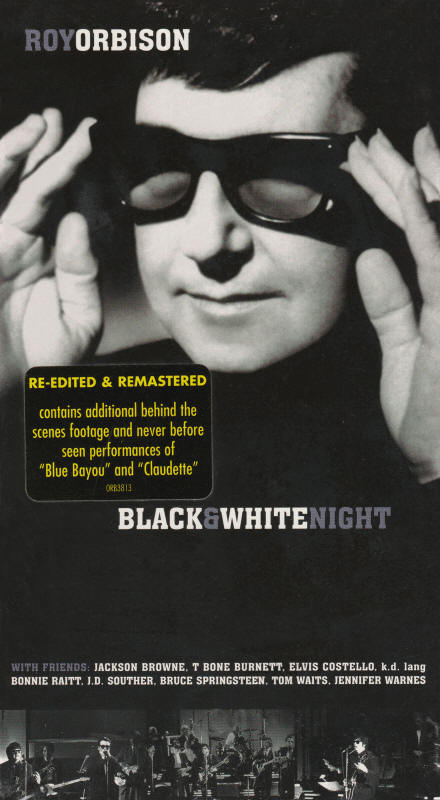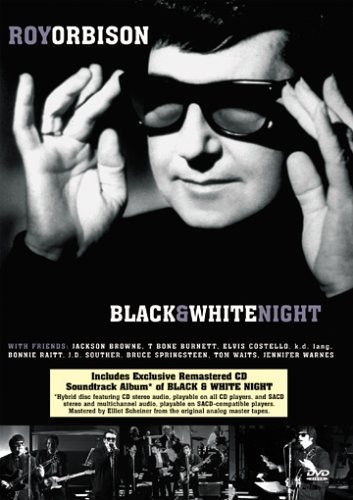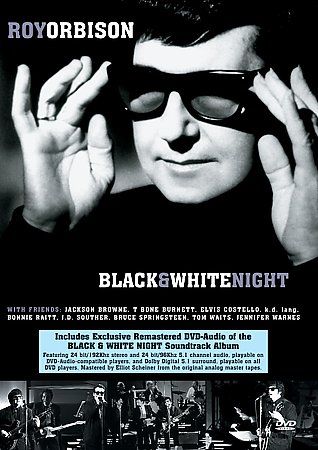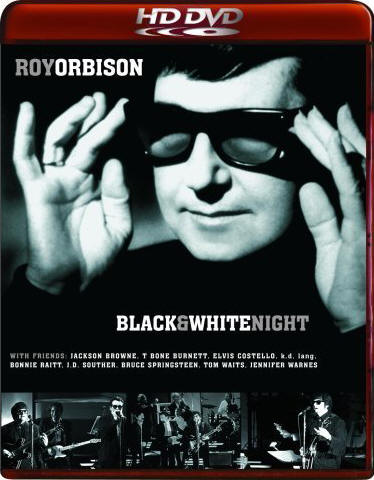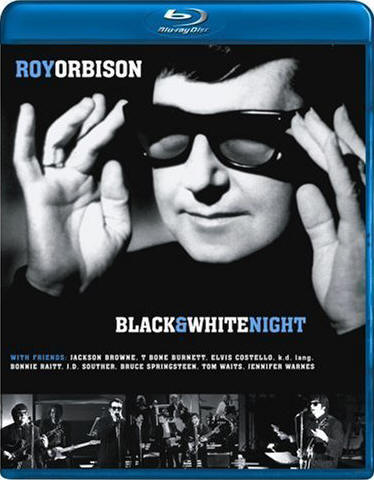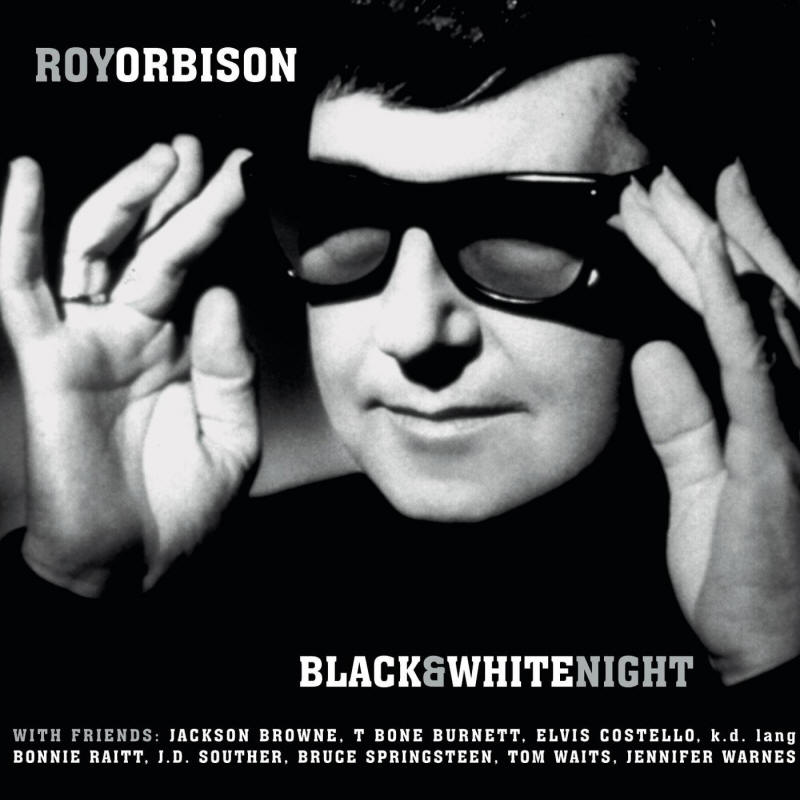MEAN WOMAN BLUES 
Live 30 Sep 1987 version
Ah, well I got a woman mean as she can be
I got a woman mean as she can be
Ah sometimes I think she's almost mean as me
She got ruby lips, she got shapely hips, yeah
Boy she makes old Roy flip
I got a woman mean as she can be (ooh)
Sometimes I think she's almost mean as me (ooh)
And I ain't braggin', it's understood
Everything I do, well I sure do it good
Yeah I got a woman mean as she can be (ooh)
Ah sometimes I think she's almost mean as me (ooh)
Well
She got ruby lips, she got shapely hips, yeah
Boy she makes old Roy flip
I got a woman mean as she can be (sha la la la la, sha la la la, sha la la la la, sha la la la)
Sometimes I think she's almost mean as me, easy now (sha la la la la, sha la la la, sha la la la la, sha la la la)
Ah ha ha ha, ah ha ha ha, ah ha ha (ooh)
A ha ha (ooh)
Ah, ah (ooh)
Yeah, yeah yeah (ooh)
Yeah, hold on now
Aah (Sha la la la la, sha la la la, sha la la la la, sha la la la)
Ooh (Sha la la la la, sha la la la, sha la la la la, sha la la la)
Rrrrrr (sha la la la la, sha la la la, sha la la la la, sha la la la)
Let's go one time
Yeah I got a woman (sha la la la la, sha la la la)
Yeah I got a woman (mean woman, sha la la la)
Yeah I got a woman (sha la la la)
Well I got a woman (mean woman, sha la la la)
Some-a-times I think she's almost mean as me (mean woman, sha la la la, mean woman, sha la la la)
Info
MEAN WOMAN BLUES is a 1957 song by Elvis Presley. See the original Elvis Presley version for more details.
Live 30 Sep 1987 version
The above lyrics are for the live 30 Sep 1987 performance of MEAN WOMAN BLUES at Ambassador Hotel in Los Angeles, CA, during the filming of the Roy Orbison And Friends: A Black & White Night TV special. During MEAN WOMAN BLUES, Bruce Springsteen played guitar standing behind Roy Orbison.
The TV Special
Roy Orbison And Friends: A Black & White Night is a 1988 Cinemax television special from the Cinemax Sessions series. It stars Hall Of Fame singer/songwriter Roy Orbison, backed by a band consisting of some of the most acclaimed performers in rock, including Bruce Springsteen. The special was first broadcast on 03 Jan 1988 on Cinemax.
Original Cinemax "A Black & White Night" poster (large version)
Original Cinemax "A Black & White Night" poster (small version)
Directed by Tony Mitchell, A Black & White Night was shot entirely in beautiful black and white, on film instead on videotape in an effort to give the show a sense of mid-fifties nightclub setting. Orbison's wife, Barbara, and musical director T Bone Burnett worked on the details with the cable station and tried to convince them to use black and white film because they wanted to "create a timeless concert," as Barbara Orbison later explained. In the end they just went ahead and bought a black and white vintage film from Paris which was left over from 1951.
The taping took place on 30 Sep 1987 at the Ambassador Hotel's Cocoanut Grove nightclub in Los Angeles, CA. That was a little more than a year before Orbison's death. Roy Orbison was accompanied by a supporting backing band put together by musical director T Bone Burnett who also played guitar during part of the concert. All members were Orbison fans who volunteered to participate in the special, and most of them were famous musicians, making the cast an all-star line-up. James Burton, Glen D. Hardin, Jerry Scheff, and Ron Tutt are all former members of the TCB Band, a group of professional musicians who formed the core rhythm section of Elvis Presley's band from August 1969 until his death in 1977.
Starring:
- Roy Orbison — guitar, lead vocals
The band:
- Alex Acuna — percussion
- T Bone Burnett — guitar
- James Burton — guitar
- Elvis Costello — guitar, organ, harmonica, vocals
- Glen D. Hardin — piano
- Jerry Scheff — bass
- Bruce Springsteen — guitar, vocals
- Ron Tutt — drums
- Mike Utley — Keyboards
- Tom Waits — guitar, organ
Backing singers:
- Jackson Browne — male backup singer
- k.d. lang — female backup singer
- Bonnie Raitt — female backup singer
- Steven Soles — male backup singer
- J.D. Souther — male backup singer, guitar
- Jennifer Warnes — female backup singer
String section:
- Pavel Farkas — violin
- Peter Hatch — viola
- Ezra Kliger — violin
- Sid Page — concert master
- Jimbo Ross — viola
Musicians lineup for the "A Black & White Night" concert
Over the end credits, several of the featured musicians are shown saying some words about Orbison. Bruce Springsteen says: "I remember when I was a kid, his music took me out of my little town, you know. And... you don't always get a chance to sing harmony with Roy Orbison and play guitar next to James Burton, that's a dream." Springsteen inducted Roy Orbison into the Rock And Roll Hall Of Fame eight months earlier. His introductory comments were used as liner notes on Orbison's 1987 compilation album In Dreams: The Greatest Hits.
Reviewing the A Black & White Night concert, Graig Rosen wrote in the Los Angeles Daily News newspaper: "The strong lineup of talent enlisted for the Orbison tribute managed to eclipse the Keith Richards-led ensemble that backed [Chuck] Berry for his 60th birthday concert featured in [the documentary] Hail! Hail! Rock 'N' Roll."
The crowd was mostly made up of music industry insiders. Billy Idol, Steve Jones, Patrick Swayze, Sandra Bernhard, Kris Kristofferson, Harry Dean Stanton, and Syd Straw were among the celebrities spotted in the audience. As the Los Angeles Daily News reported, hundreds of people, ranging from nightclub bookers and industry heavyweights to upcoming musicians, stood at the nightclub entrance an hour before the show waiting to get in.
As far as it's known, 18 songs were performed during the A Black & White Night concert. All songs are Roy Orbison classics, except THE COMEDIANS which is an Elvis Costello cover. The original TV broadcast consisted of only 15 songs due to time constraints. The 1988 home video release contains the same 15 songs as the original TV broadcast, and later reissues added three more that were not originally broadcast: BLUE BAYOU, CLAUDETTE, and BLUE ANGEL. See the "Official Releases" section below for more details. However, according to the above-mentioned Los Angeles Daily News review, a total of 19 songs were performed that night. If the number is accurate, then an unknown 19th song was performed but was not included on any of the official releases.
Neither the original TV broadcast nor the official releases reflect the correct order of the concert's setlist. However, watching the A Black & White Night home video, and the high definition Blu-ray release in particular, one can notice timers on the walls that were set for the film crew, one to the far left of the stage and one to the right. Observing the timers throughout the film, one can rearrange the songs in the correct order in which they were performed during that 30 Sep 1987 concert. The timers can be seen during most songs, enough to reconstruct the original concert's setlist. As for (ALL I CAN DO IS) DREAM YOU, during which the camera angles don't zoom out enough to show one of the timers, its place in the setlist can be determined based on some several clues, including the 1987 reviews of the concert, the order in which the songs were rehearsed the previous day, and the stage setup. For example, the string section was onstage from the concert's beginning until THE COMEDIANS. Tom Waits, who arrived very late and reportedly drunk, joined the cast from DREAM BABY (HOW LONG MUST I DREAM) onward. T Bone Burnett, who surveyed the crowd at the beginning, joined the cast from DREAM BABY (HOW LONG MUST I DREAM) until OOBY DOOBY.
In his 2015 memoir Unfaithful Music & Disappearing Ink, Elvis Costello wrote: "By the third hour of the Black and White Night filming, everything in the room was revolving. We'd drunk our fill of cocktails in the short breaks and I'd even switched into dark glasses to cover my tracks, which the editorial continuity tactfully ignored." This is another clue that helps rearrange the songs in the correct order in which they were performed. Costello can be seen wearing regular glasses until RUNNING SCARED and he switches to sunglasses from THE COMEDIANS onward.
Another take (or takes) of CLAUDETTE may have been performed right before the show closer, OH, PRETTY WOMAN, but the released take took place about an hour after the show had finished, maybe at the request of the producers. This is evident from the timers and from some shots that show the chairs at the tables are empty, and in the Blu-ray version there's an angle that even shows the concert hall is empty. There are only people at the very front, so either the producers got some people to sit at the very front to make it look like there was still a full audience or there are shots being used from two different performances of the song, one during the concert and one after. And when listening to the song there certainly is a suspicious lack of audience noise as well. When Elvis Costello shouts "1, 2, 3, 4!" not even into a microphone the sound is so clear, which it wouldn't be in a packed concert hall.
Reviewing the A Black & White Night concert, Amy Dawes wrote in the Winter 1988 issue (#23) of Backstreets magazine that there were three failed attempts at THE COMEDIANS and later in the show they did the song again. The take that was broadcast and released is the fourth and successful one, but the timers in the footage show that some shots were taken from the previous failed takes. Their place in the setlist can be determined based on the review and the timers. Moreover, Elvis Costello can be seen wearing sunglasses throughout the song, except in a few shots where he's wearing regular glasses instead. Below is the complete known setlist, but there's definitely another take of OOBY DOOBY as Roy Orbison's guitar solo is slightly different on the CD release to the DVD release, and there must have been other takes of other songs too. All in all, the concert lasted almost six hours, from about 7:00 p.m. to about 1:00 a.m., including numerous breaks to reload the cameras.
Known 30 Sep 1987 concert setlist:
A full rehearsal took place on the previous day (29 Sep 1987) at the Cocoanut Grove nightclub. The camera crew was present to shoot some clips and interviews, mainly for use in TV spots and radio adverts. Luckily much of the footage has emerged online in May 2015. Though all of the A Black & White Night concert's songs must have been rehearsed on that day, the below list is for the songs confirmed to have been rehearsed based on the circulating video footage, in the correct order. The setlist seems to be very similar to the one from the following day's concert.
Known 29 Sep 1987 rehearsal setlist:
- THE COMEDIANS
- BLUE ANGEL
- IT'S OVER
- RUNNING SCARED
- UPTOWN
- DREAM BABY (HOW LONG MUST I DREAM)
- MEAN WOMAN BLUES
- CANDY MAN
- BLUE BAYOU
- (ALL I CAN DO IS) DREAM YOU
- CLAUDETTE
- OH, PRETTY WOMAN
Official Releases
The TV special was released in 1988 on VHS and LaserDisc, titled "A Black & White Night" and credited to "Roy Orbison & Friends". The home video contains the same 15 songs as the original TV broadcast. In 1989 a live album was released on Virgin Records, titled "A Black And White Night Live" and again credited to "Roy Orbison And Friends". The album contains the same 15 songs, in addition to BLUE BAYOU. The tracks on the home video and the live album are in completely different order. See the track lists at the end of this section for more details.
Roy Orbison & Friends -- A Black & White Night
VHS - HBO Video (0073) - USA, 1988
Roy Orbison & Friends -- A Black & White Night
VHS - HBO Video (7517-2) - USA, 1988
Roy Orbison & Friends -- A Black & White Night
VHS - HBO Video (50195-3) - USA, 1988
Roy Orbison & Friends -- A Black & White Night
VHS - HBO Video (90720) - USA, 1988
Special gift edition.
Roy Orbison & Friends -- A Black And White Night
VHS - Virgin Music Video (VVD 308) - UK, 1988
Roy Orbison And Friends -- A Black & White Night
VHS - PolyGram (VIR1892) - Australia, 1988
Roy Orbison & Friends -- A Black & White Night
LaserDisc - HBO Video (ID6571HB) - USA, 1988
Roy Orbison & Friends -- A Black & White Night
LaserDisc - Pioneer LDC (SM035-3474) - Japan, 1988
Roy Orbison And Friends -- A Black And White Night Live
LP - Virgin (91295-1) - USA, 1989
CD - Virgin (91295-2) - USA, 1989
MC - Virgin (91295-4) - USA, 1989
The home video and the live album were reissued in 1997 on Orbison Records, this time titled "Black & White Night" and simply credited to "Roy Orbison". They contain the same tracks (in the same order) as the original issues. See the track lists at the end of this section for more details.
Roy Orbison -- Black & White Night
VHS - Orbison Records (ROBW2000-3) - USA, 1997
Roy Orbison -- Black & White Night
CD - Orbison Records (ROBW7891-21) - USA, 1997
MC - Orbison Records (ROBW1987-4) - USA, 1997
The home video was reissued again in 1999 and DVD, in 2000 on VHS, in 2007 on HD-DVD, and in 2008 on Blu-ray. The DVD issue was reissued in 2004 with the audio album as bonus disc in SACD and DVD-Audio formats. All of those reissues contain the same 15 songs as the original TV broadcast, plus BLUE BAYOU, CLAUDETTE, and BLUE ANGEL. The latter is exclusive to the HD-DVD and Blu-ray issues and also the SACD and DVD-Audio that were included with the DVD issues in 2004. The live album was also reissued in 1999, this time with the tracks rearranged to match the order on the home video releases, and containing the same 17 songs as the 1999 DVD release and the 2000 VHS release. See the track lists at the end of this section for more details.
Roy Orbison -- Black & White Night
DVD - Orbison Records / Image Entertainment (ID8826OBDVD) - USA, 1999
Roy Orbison -- Black & White Night
DVD - Orbison Records / Image Entertainment (74321 82812 9) - USA, 1999
Roy Orbison -- Black & White Night
VHS - Orbison Records (ORB3813-3) - USA, 2000
Roy Orbison -- Black & White Night
DVD + SACD - Orbison Records / Image Entertainment (ID2770OBDVD) - USA, 2004
The SACD contains 18 tracks, though only 17 are listed on the packaging.
Roy Orbison -- Black & White Night
DVD + DVD-Audio - Orbison Records / Image Entertainment (ID2779OBDVD) - USA, 2004
The DVD-Audio contains 18 tracks, though only 17 are listed on the packaging
Roy Orbison -- Black & White Night
HD-DVD - Orbison Records / Image Entertainment (ID4443OBHD) - USA, 2007
Roy Orbison -- Black & White Night
Blu-ray - Orbison Records / Image Entertainment (ID4954OBBD) - USA, 2008
Roy Orbison -- Black & White Night
CD - Orbison Records / Legacy (ORB3813-2) - USA, 1999
On the 1988 and 1997 issues of the home video and the original broadcast, A Black & White Night was edited in a way that focuses most on Roy Orbison. For the 1999 reissue, the film was re-edited from the original footage, probably completely from scratch, leading to very different camera angles and viewing experience. For the HD-DVD and Blu-ray reissues, the film was again edited, leading to different camera angles and viewing experience from previous releases.
Live History
MEAN WOMAN BLUES was performed off-tour on 30 Sep 1987 at Ambassador Hotel in Los Angeles, CA, during the filming of the Roy Orbison And Friends: A Black & White Night TV special. The song was played with Roy Orbison. This live 30 Sep 1987 performance of MEAN WOMAN BLUES was first released on the A Black & White Night home video in 1988.
Credits
Thanks Jake (ol'catfishinthelake at BTX and Greasy Lake) for the lyrics help and James from England for his major role in figuring out the correct order of the concert's setlist. Thanks Alberto Sacchini for the UK VHS scan. Thanks Larry Crum for the information about the DVD + DVD-Audio issue.
Request
According to the Los Angeles Daily News review, a total of 19 songs were performed during the filming of the A Black & White Night TV special. It is possible that the reporter miscounted. Please contact me if you have any information about this.
I wrote above that the original HBO broadcast consisted of 15 songs, but I am not 100% sure of this. I know however that the version televised in the UK consisted of 13 songs only, missing RUNNING SCARED and MEAN WOMAN BLUES. Please contact me if you know for sure of how many songs the original HBO broadcast consisted.
I wrote above that for the HD-DVD and Blu-ray reissues, the film was again edited, leading to different camera angles and viewing experience from previous releases. I am not sure if this applies to both the HD-DVD and Blu-ray reissues, or only to the Blu-ray reissue, but I am assuming that it applies to both. I also assumed that the 1997 reissue of the film was not reedited; it is the same as the original broadcast and VHS and LaserDisc releases. Please contact me if you can shed some light on this.
Please contact me if you have or know of any other official releases containing the A Black & White Night concert (or portions of it) that are not mentioned on this page, or if you have any corrections to the above list of official releases. I am also looking for better scans for the following releases:
- Roy Orbison & Friends -- A Black & White Night || VHS - HBO Video (50195-3) - USA, 1988
- Roy Orbison & Friends -- A Black & White Night || LaserDisc - HBO Video (ID6571HB) - USA, 1988
- Roy Orbison & Friends -- A Black & White Night || LaserDisc - Pioneer LDC (SM035-3474) - Japan, 1988
- Roy Orbison -- Black & White Night || VHS - Orbison Records (ROBW2000-3) - USA, 1997
- Roy Orbison -- Black & White Night || CD - Orbison Records (ROBW7891-21) - USA, 1997
- Roy Orbison -- Black & White Night || DVD + SACD - Orbison Records / Image Entertainment (ID2770OBDVD) - USA, 2004
- Roy Orbison -- Black & White Night || DVD + DVD-Audio - Orbison Records / Image Entertainment (ID2779OBDVD) - USA, 2004
There are two versions of the original U.S. issue of the VHS, one with catalog # 0073 and one with catalog # 50195-3 (see "Official Releases" section above). Please contact me if you know the difference between the two, or if one was pressed first and the other is a reissue.
Please contact me if you have a better scan or photo of the original Cinemax "A Black & White Night" poster (small version).
For any additions, comments, or corrections to this page, please contact me via the below form or by email: .
Available Versions
List of available versions of MEAN WOMAN BLUES on this website:
MEAN WOMAN BLUES [Live 30 Sep 1987 version]
MEAN WOMAN BLUES [Original Elvis Presley version]
Page last updated: 01 Sep 2015

